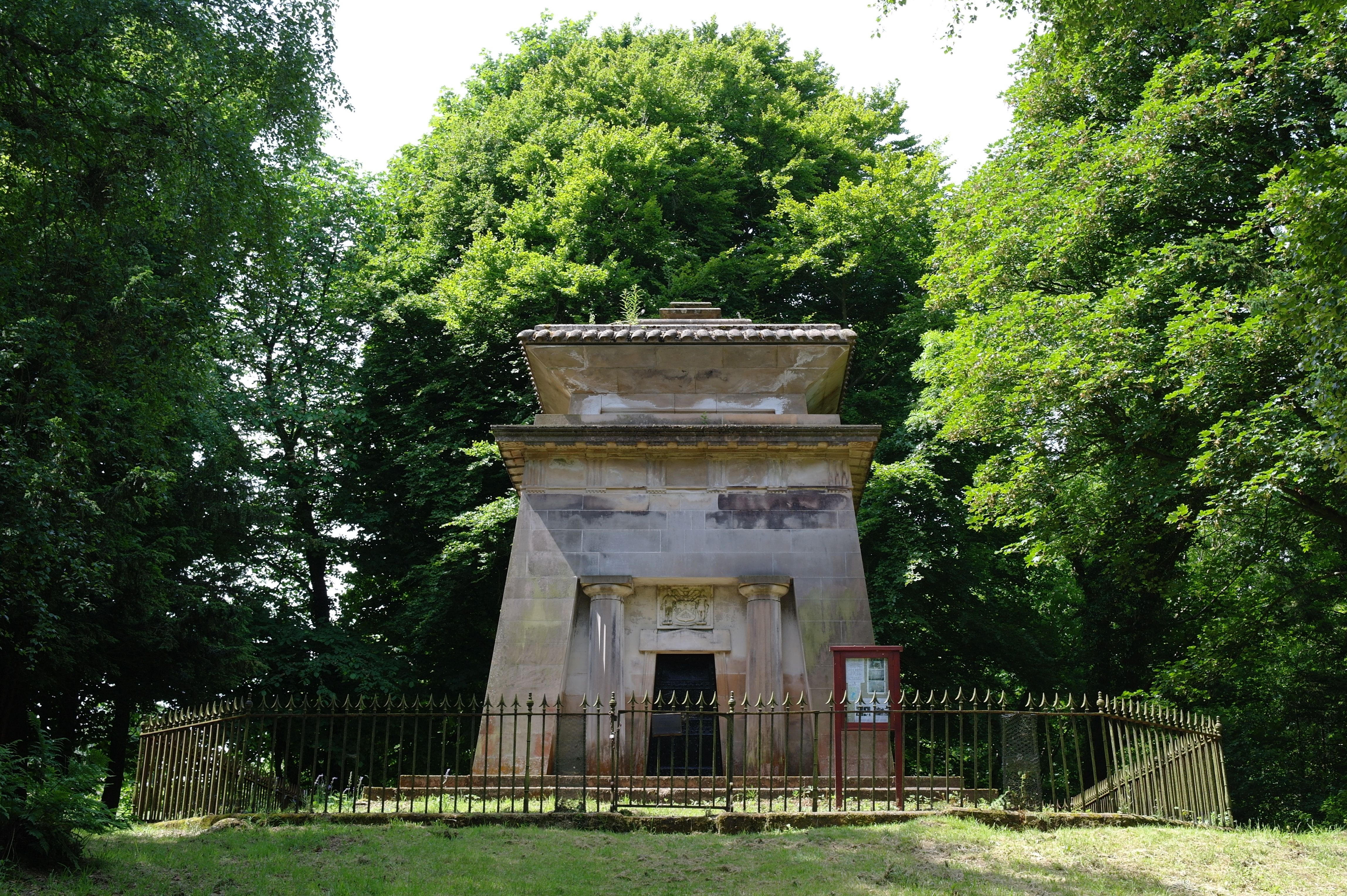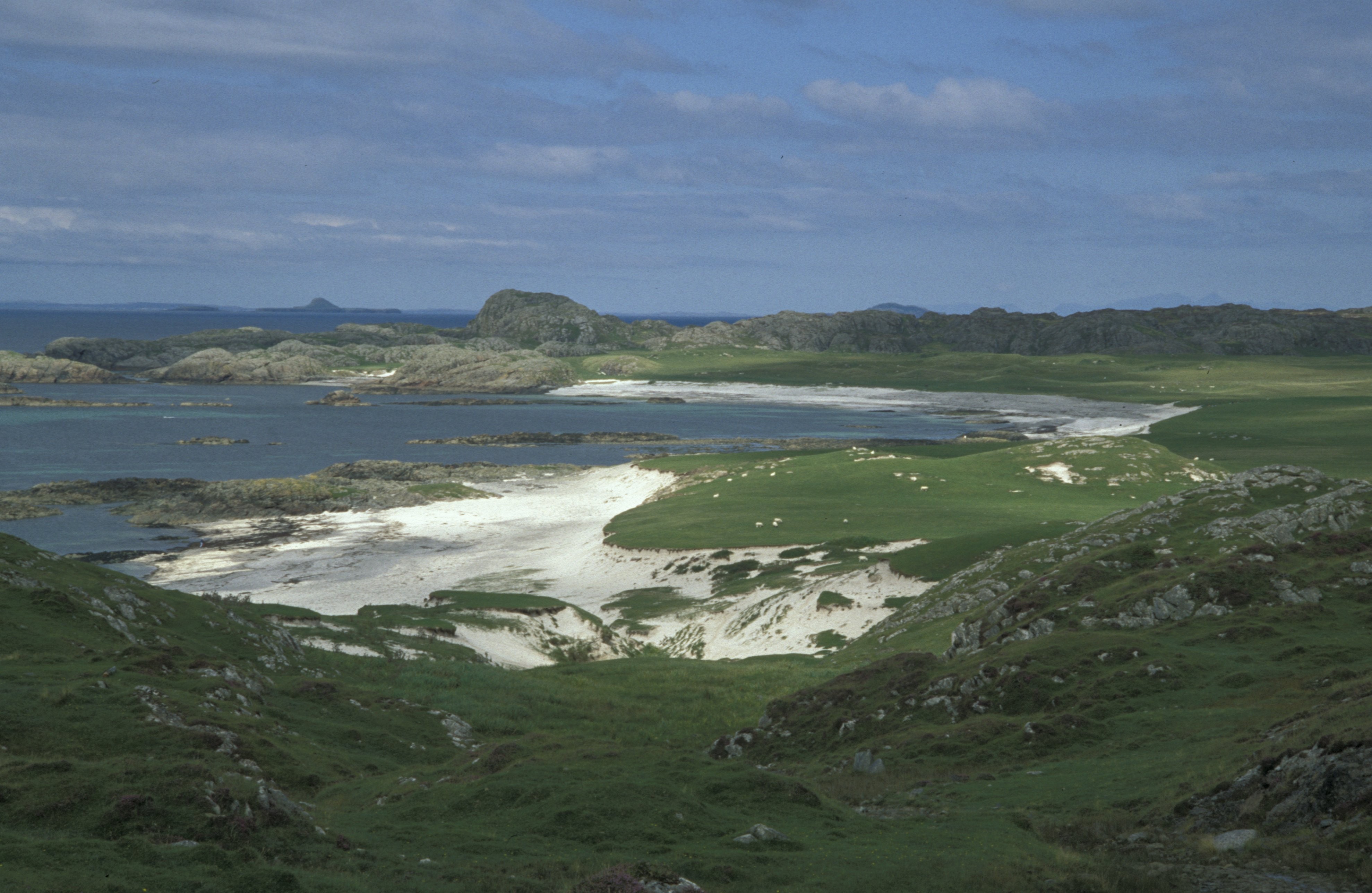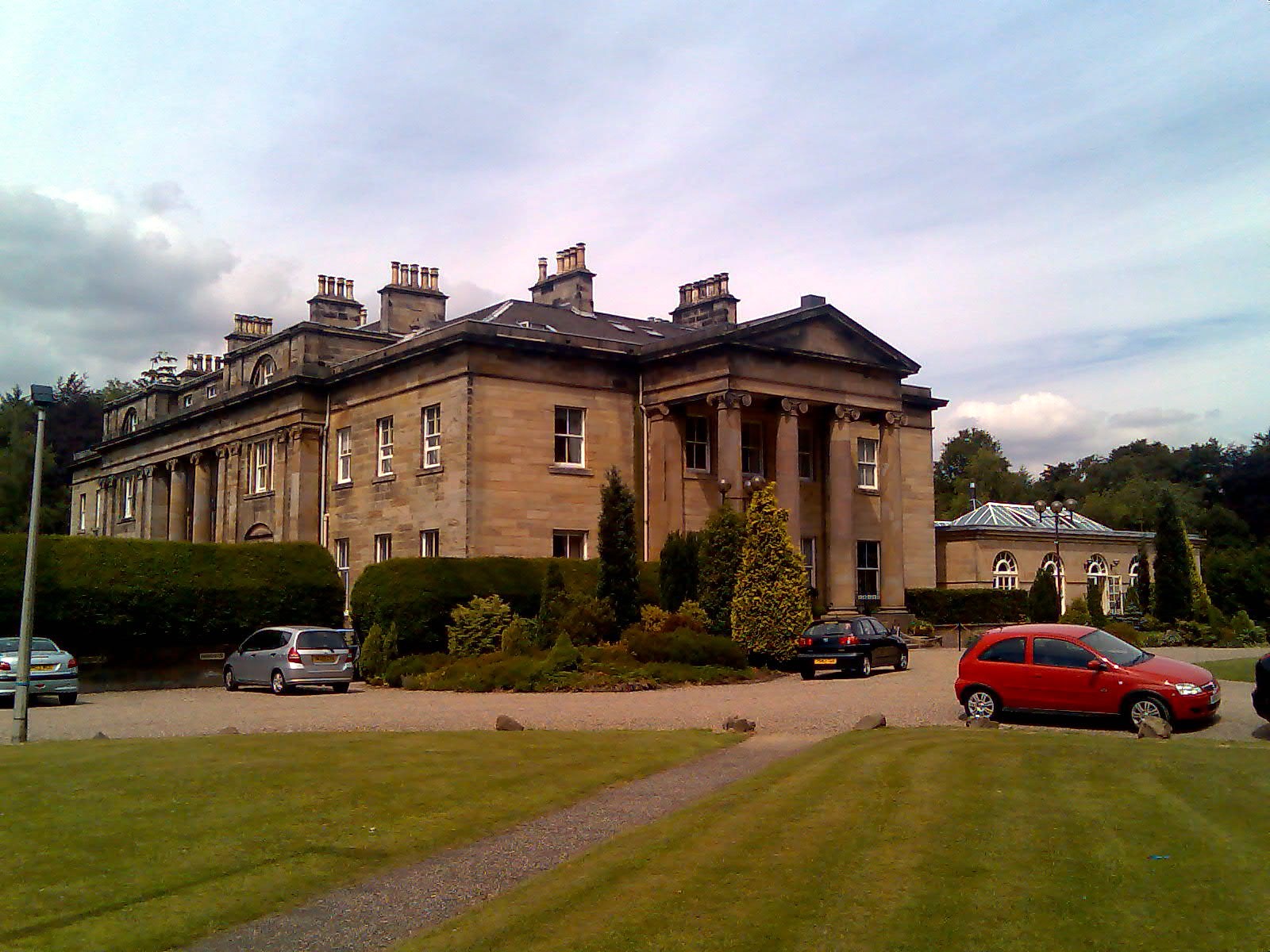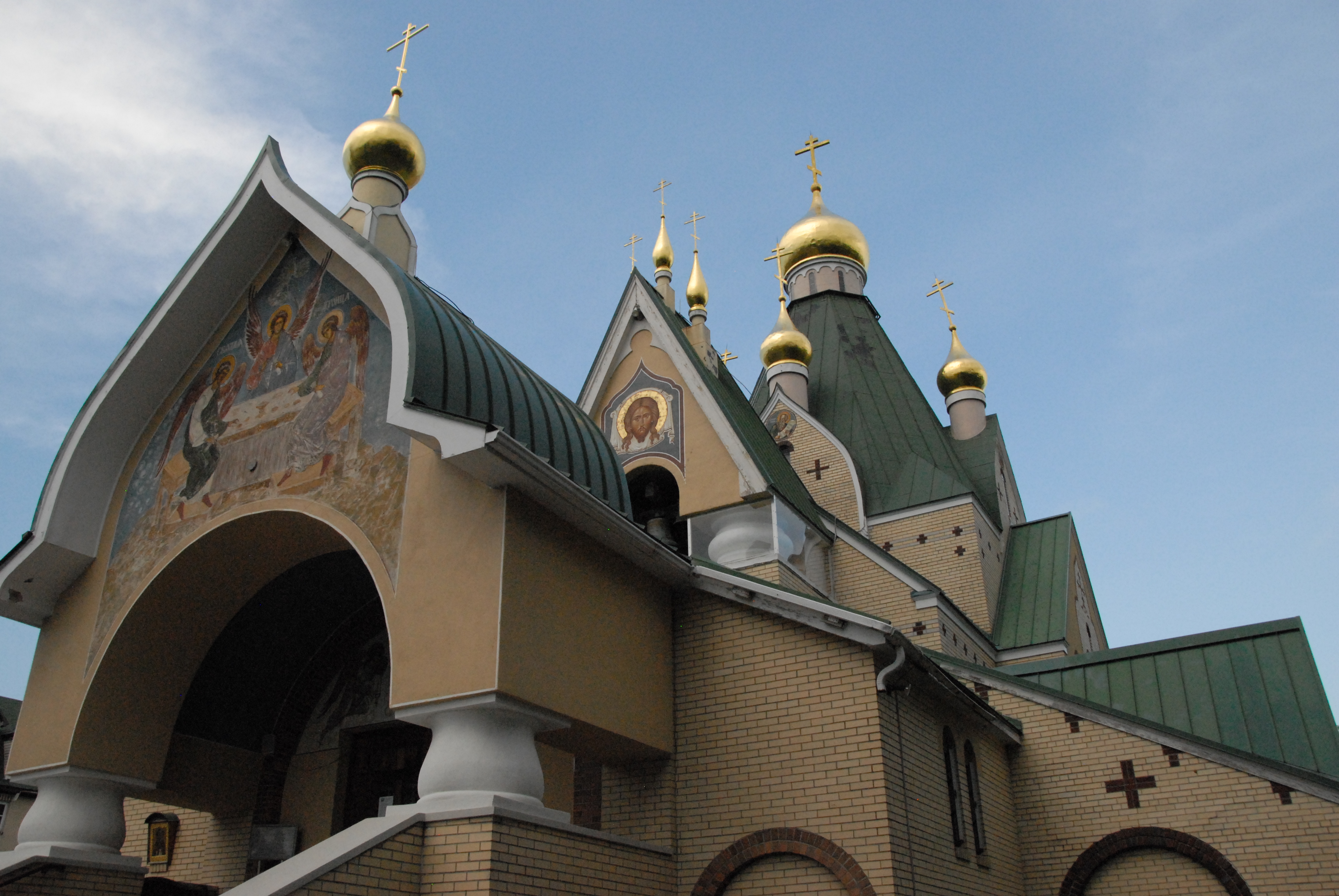|
Gelston Castle
Gelston Castle, located near Castle Douglas in Kirkcudbrightshire in Dumfries and Galloway, Scotland, was built by Sir William Douglas of Castle Douglas, who had acquired the lands of Gelston in 1799. However, Sir William Douglas died without issue in 1809 and his property was divided between various nieces and nephews, with Gelston going to the youngest daughter of his brother James, Mathilda Douglas. In 1813 Mathilda married William Maitland, and their family continued to preside over the estate for most of the 19th Century. Gelston then became the property of the Galliers-Pratts who retained the castle for pheasant shooting, and from whom it was requisitioned during World War II. During this time it served as a home for handicapped boys evacuated from Glasgow, before the roof was removed once this use had ceased. The ancient owners of Gelston were probably monks of Iona. King William, 'The Lion of Scotland', granted Gelston to the monks of Holyrood, sometime between 1165 ... [...More Info...] [...Related Items...] OR: [Wikipedia] [Google] [Baidu] |
Gelston Castle - View From NW
Gelston may refer to: * Gelston, Dumfries and Galloway, a hamlet in Scotland * Gelston, Lincolnshire, a village in England *David Gelston (1744–1828), an American merchant and politician *Gelston Castle in Jordanville, New York, in the United States *Gelston Castle Gelston Castle, located near Castle Douglas in Kirkcudbrightshire in Dumfries and Galloway, Scotland, was built by Sir William Douglas of Castle Douglas, who had acquired the lands of Gelston in 1799. However, Sir William Douglas died withou ..., a listed building in Kelton, Dumfries and Galloway, in Scotland {{Disambig, geo, surname ... [...More Info...] [...Related Items...] OR: [Wikipedia] [Google] [Baidu] |
Castle Douglas
Castle Douglas () is a town in Dumfries and Galloway, Scotland. It lies in the lieutenancy area of Kirkcudbrightshire, in the eastern part of Galloway, between the towns of Dalbeattie and Gatehouse of Fleet. It is in the ecclesiastical parish of Kelton. History Castle Douglas is built next to Carlingwark Loch in which traces of prehistoric crannogs can be found, evidence of early inhabitation of the area. A large bronze cauldron containing about 100 metal objects was found in Carlingwark Loch near Fir Island about 1866. The hoard of tools of iron and bronze is probably Romano-Belgic of the late first or early second centuries AD and is likely to have been a votive offering. It is now in the National Museums of Scotland in Edinburgh. To the north of the town Glenlochar is the site of two successive Roman forts: the first was built during the invasion of Agricola, and the second during the Antonine period. They appear to have been for cavalry units, and evidence has been ... [...More Info...] [...Related Items...] OR: [Wikipedia] [Google] [Baidu] |
Dumfries And Galloway
Dumfries and Galloway (; ) is one of the 32 unitary council areas of Scotland, located in the western part of the Southern Uplands. It is bordered by East Ayrshire, South Ayrshire, and South Lanarkshire to the north; Scottish Borders to the north-east; the English county of Cumbria, the Solway Firth, and the Irish Sea to the south, and the North Channel (Great Britain and Ireland), North Channel to the west. The administrative centre and largest settlement is the town of Dumfries. The second largest town is Stranraer, located to the west of Dumfries on the North Channel coast. Dumfries and Galloway corresponds to the counties of Scotland, historic shires of Dumfriesshire, Kirkcudbrightshire, and Wigtownshire, the last two of which are collectively known as Galloway. The three counties were combined in 1975 to form a single regions and districts of Scotland, region, with four districts within it. The districts were abolished in 1996, since when Dumfries and Galloway has been a ... [...More Info...] [...Related Items...] OR: [Wikipedia] [Google] [Baidu] |
Sir William Douglas, 1st Baronet
Sir William Douglas, 1st Baronet (died 1809) was a Scottish landowner and industrialist, best known for founding the planned town of Castle Douglas in the Stewartry of Kirkcudbright (now within Dumfries and Galloway), south-west Scotland. He began life as a humble pedlar but soon became wealthy from dealings in an unspecified 'American trade'. He returned to Scotland in the late 18th century, where his major work was the development of cotton mills and a town next to Carlingwark Loch. This was a planned town set around a grid plan system of streets, similar to that of Edinburgh's New Town, planned at around the same time. This town was named Castle Douglas in 1792, having previously been known as "Carlingwark". Sir William also established cotton mills in Newton Stewart, which was temporarily renamed "Newton Douglas" in his honour, and a range of industries in Castle Douglas including a brewery, woollen mill, soap works and tannery. Douglas was granted a baronetcy in 1801. In 1 ... [...More Info...] [...Related Items...] OR: [Wikipedia] [Google] [Baidu] |
Iona
Iona (; , sometimes simply ''Ì'') is an island in the Inner Hebrides, off the Ross of Mull on the western coast of Scotland. It is mainly known for Iona Abbey, though there are other buildings on the island. Iona Abbey was a centre of Gaelic monasticism for three centuries and is today known for its relative tranquility and natural environment. It is a tourist destination and a place for spiritual retreats. Its modern Scottish Gaelic name means "Iona of (Saint) Columba" (formerly anglicised as "Icolmkill"). In 2019, Iona's estimated population was 120. In March 1980, the Hugh Fraser Foundation donated much of the main island (and its off-lying islands) to the current owner, the National Trust for Scotland. The abbey and some church buildings are owned by the Iona Cathedral Trust. One publication, describing the religious significance of the island, says that the island is "known as the birthplace of Celtic Christianity in Scotland,” and notes that “St Columba came here ... [...More Info...] [...Related Items...] OR: [Wikipedia] [Google] [Baidu] |
Holyrood Abbey
Holyrood Abbey is a ruined abbey of the Canons Regular in Edinburgh, Scotland. The abbey was founded in 1128 by David I of Scotland. During the 15th century, the abbey guesthouse was developed into a List of British royal residences, royal residence, and after the Scottish Reformation the Palace of Holyroodhouse was expanded further. The abbey church was used as a parish church until the 17th century, and has been ruined since the 18th century. The remaining walls of the abbey lie adjacent to the palace, at the eastern end of Edinburgh's Royal Mile. The site of the abbey is protected as a scheduled monument. Etymology of name Rood is a word for the cross on which Jesus Christ was crucified; thus the name Holyrood (cross), Holyrood is equivalent to "true cross, Holy Cross". History Legend relates that in 1127, while King David I was hunting in the forests to the east of Edinburgh during the Feast of the Cross, he was thrown from his horse after it had been startled by a har ... [...More Info...] [...Related Items...] OR: [Wikipedia] [Google] [Baidu] |
Ragman Rolls
The Ragman Rolls are the collection of instruments by which the nobility and gentry of Scotland subscribed allegiance to King Edward I of England, during the time between the Conference of Norham in May 1291 and the final award in favour of Balliol in November 1292; and again in 1296. Of the former of these records two copies were preserved in the Chapter House at Westminster Abbey (now in the National Archives at Kew), and it has been printed by Thomas Rymer. Another copy, preserved originally in the Tower of London, is now also in the National Archives. The latter record, containing the various acts of homage and fealty extorted by Edward from John Balliol and others in the course of his progress through Scotland in the summer of 1296 and in August at the parliament of Berwick, was published by Prynne from the copy in the Tower and now in the National Archives. Both records were printed by the Bannatyne Club in 1834. The derivation of the word ''ragman'' is described in s ... [...More Info...] [...Related Items...] OR: [Wikipedia] [Google] [Baidu] |
Richard Crichton
Richard Crichton (died 1817) was a Scottish architect operating in the late 18th and early 19th centuries. He was described as "competent and versatile". Life He was born around 1771, the son of James Crichton (d.1797) an Edinburgh mason. He trained under John and Robert Adam, probably the best training an architect in 18th century Britain could hope for. In May 1797 he was appointed as a burgess in the city of Edinburgh, reflecting the public esteem with which he was viewed. He continued the style of the Adams: a simple but very well-proportioned Classicism, occasionally venturing to the Gothic or Greek Revival styles, all with equal competence. In 1813 he submitted a competition design for the extension of Princes Street over to Calton Hill but despite winning this (jointly with William Reid of Glasgow), the scheme was ultimately executed by Archibald Elliot. Crichton’s career was cut short by his premature death on 17 August 1817, aged only 46. He is buried in S ... [...More Info...] [...Related Items...] OR: [Wikipedia] [Google] [Baidu] |
Robert Adam
Robert Adam (3 July 17283 March 1792) was a British neoclassical architect, interior designer and furniture designer. He was the son of William Adam (architect), William Adam (1689–1748), Scotland's foremost architect of the time, and trained under him. With his older brother John Adam (architect), John, Robert took on the family business, which included lucrative work for the Board of Ordnance, after William's death. In 1754, he left for Rome, spending nearly five years on the continent studying architecture under Charles-Louis Clérisseau and Giovanni Battista Piranesi. On his return to Britain he established a practice in London, where he was joined by his younger brother James Adam (architect), James. Here he developed the "Adam Style", and his theory of "movement" in architecture, based on his studies of antiquity and became one of the most successful and fashionable architects in the country. Adam held the post of Office of Works, Architect of the King's Works from 176 ... [...More Info...] [...Related Items...] OR: [Wikipedia] [Google] [Baidu] |
Jordanville, New York
Jordanville is a hamlet in the town of Warren, Herkimer County, New York, United States. Jordanville is in the northwestern part of Warren, at the intersection of New York State Route 167 and County Route 155. The community was settled by European Americans after the Revolutionary War and before 1791. Its name was derived from the nearby Ocquionis Creek, which was used by settlers for baptisms and likened by them to the Jordan River. History The hamlet was once served by the Southern New York Railroad, an electric trolley line that ran from Oneonta to Mohawk. Gelston Castle This castle was built in 1836 by Harriet Douglas Cruger, with stone sourced from Little Falls, New York. She had been inspired as a young woman by seeing Gelston Castle, owned by her uncle in Scotland, which she visited. Harriet Douglas was described as an independent and eccentric woman, who had her marriage bed sawed in half and used as two couches after an acrimonious divorce. She was profile ... [...More Info...] [...Related Items...] OR: [Wikipedia] [Google] [Baidu] |








